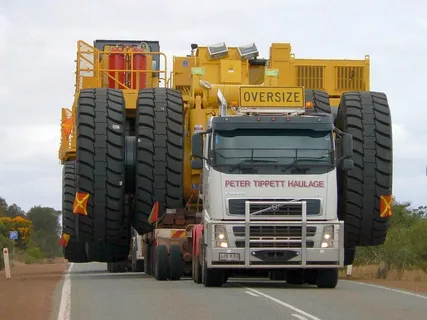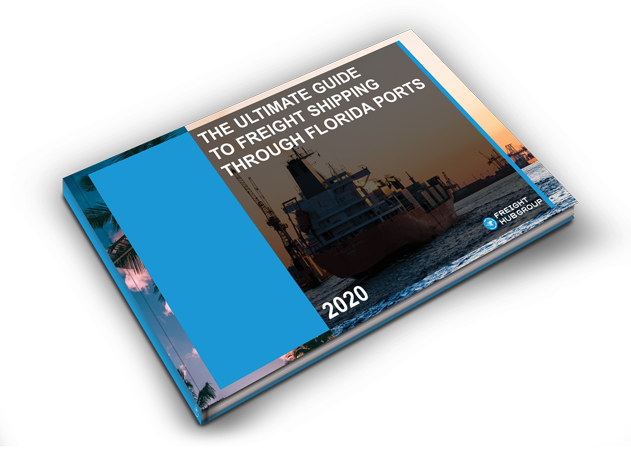What You Need To Know About Over-Size Loads
Oversize equipment is a necessary part of some businesses. The problem is that when people don’t know the laws or regulations in place for these oversize loads, it can be difficult to transport them from one point to another.
In this blog post, we will discuss what is considered an oversize load, the width of such a load, and the different regulations in place for transporting them. We hope this information will help those who are planning to transport an oversize load in the near future.
What is Oversize equipment?
Oversize equipment is any piece of equipment that is too large or heavy to be moved by a standard truck. Oversize loads can cause serious damage if they are not handled correctly, and often times these accidents happen during the loading process.
There are several things you need to know about oversized loads in order to avoid getting caught up in an accident:
- Oversized equipment should only be loaded onto trucks with the appropriate lifting capacity. This information can usually be found on the back of the truck itself or online at your freight company’s website.
- The driver responsible for loading and unloading oversized equipment must have proper training and certification from their Freight Company or organization. A lack of training could lead to dangerous mistakes while moving this type of load, which could result in injuries or even death for both personnel involved and the cargo being transported..
- Always use caution when working around oversized equipment; never attempt to move it yourself without first consulting with your Freight Company or organization. Even if you think you have enough experience, there is always a chance something could go wrong – resulting in costly damages for both sides.
Oversize loads present unique challenges for businesses across many industries because they often result in costly damages and injuries.

Oversize load width:
Oversize load width is the maximum amount of data that can be sent over a network in one go. Oversize loads are often caused by incorrect configuration or misuse of your networking equipment, and they can have serious consequences for your business.
Oversize loads cause problems because they create congestion on the network and prevent other users from getting their packets through. This congestion slows down both your website and the traffic to all of your downstream servers, which could lead to lost revenue, customer dissatisfaction, and even loss of data.
There are several ways you can identify if you’re experiencing an oversized load:
You may experience decreased response times when browsing pages on your website; uploads or downloads may take longer than usual; or webpages might start loading slowly after being loaded normally before.
If any of these symptoms occur regularly, it’s likely that you have an oversized load problem and should investigate what might be causing it..
What considered an oversize load?
Over-size loads are a common issue for businesses that use marketing automation. They can cause your workflows to bog down and be ineffective, as well as increase the risk of data breaches.
There is no definitive answer to what constitutes an oversize load, but it refers to any activity or task that takes more time than it would normally take due to its size or complexity. This includes sending too many emails, creating too many content proposals, and contacting too many leads depending on the state.
They can cause serious problems for your business, including:
- Increased energy costs
- Damage to equipment and wiring
- Inability to meet safety standards
- Reduced productivity due to downtime or missed deadlines
- Poor customer service due to lack of accessibility or communication channels
The most common types of accidents caused by oversized safety equipment include: jackknifing (a tractor-trailer overturns), rollover (trucks carrying heavy cargo flip over), collisions with other vehicles, and derailments. In order for your business to avoid these types of accidents, you need to understand the laws related to transporting oversized loads and carry adequate insurance coverage.
The main reason why wide load or oversize load can cause your workflows to bog down is that they create excessive demand on your system resources. Marketing automation tools are designed for automated communication with prospects; when you overload them with too much information at once, they struggle to keep up. This can lead to delayed responses, missed opportunities, and ultimately lower conversion rates.
Tips to avoid Oversize Load:
When it comes to your business, there are a few things that you just can’t afford to mess up. One of these is your overload size . Overload size refers to the amount of physical or digital goods that are stored in a particular location. If this number exceeds the limits set by your company, it can lead to negative consequences such as lost sales and damaged equipment.
There are several ways you can avoid exceeding your overload size limit:
1) Use best 3pl companies for shipping and storage. This will help reduce the burden on your own resources and ensure that all shipments reach their destination safely and on time.
2) Reverse logistics companies can help manage overflow loads by storing excess inventory for customers who need it most. By taking care of this extra volume for clients, reverse logistics companies often earn higher margins than traditional warehouses and state to state..
3) Set clear guidelines for what is allowed into your warehouse so that you don’t end up with too much unwanted material cluttering up space unnecessarily

Oversize load regulations to Follow:
Oversize equipment can cause serious accidents, and businesses that transport oversized loads are required by law to have insurance coverage in case of an accident.
The Federal Motor Carrier Safety Administration (FMCSA) regulates oversized loads by setting specific limits on their weight, size, height, length, or girth. The FMCSA also requires carriers to have special heavy equipment in place to handle these heavy loads safely. If you’re transporting something that exceeds one of these limits, your shipment may not make it through customs without getting confiscated or causing major damage along the way.
There are three main types of oversize load regulations: federal, state permit, and local.
- Federal Oversize Load Regulations (FOLRs) are set by the government at national level and cover all aspects of construction work involving heavy equipment or structures.
- State Oversize Load Regulations (SOLRs) are set by individual states and cover specific areas such as building codes or transportation laws.
- Local Oversize Load Regulations (LORs) apply only within certain jurisdictions such as municipalities or counties.
It is important to know which type of regulation applies to your project because each has its own requirements and penalties for violating them.. For example, FOLRs impose heavier fines on violators than SOLRs do; LORs have no monetary sanctions at all but may instead require corrective action like modifications to existing buildings or roadways..
Oversize load width is the maximum width of an item that can be loaded onto a freight truck. Oversize loads are dangerous and illegal, and can cause serious damage to both the truck and its cargo.
Recent Posts
Watch our Podcast

THE ULTIMATE GUIDE TO FREIGHT SHIPPING THROUGH FLORIDA PORTS
When it comes to ocean freight shipping in Florida, there is a lot to know to ensure you follow the appropriate steps when shipping into and out of Florida Ports.
Just enter in your email address and receive your FREE E-Book in minutes!